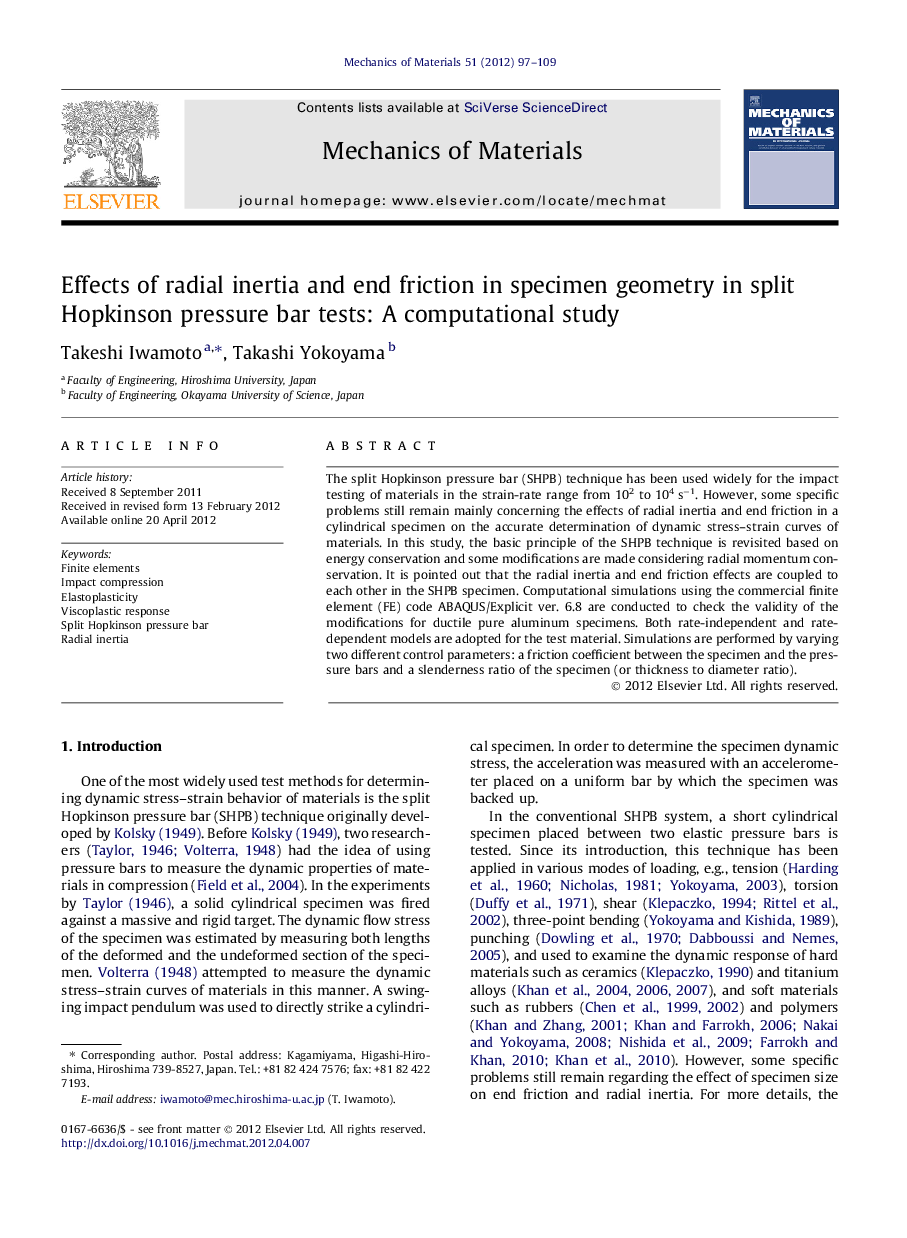| کد مقاله | کد نشریه | سال انتشار | مقاله انگلیسی | نسخه تمام متن |
|---|---|---|---|---|
| 802889 | 1467490 | 2012 | 13 صفحه PDF | دانلود رایگان |

The split Hopkinson pressure bar (SHPB) technique has been used widely for the impact testing of materials in the strain-rate range from 102 to 104 s−1. However, some specific problems still remain mainly concerning the effects of radial inertia and end friction in a cylindrical specimen on the accurate determination of dynamic stress–strain curves of materials. In this study, the basic principle of the SHPB technique is revisited based on energy conservation and some modifications are made considering radial momentum conservation. It is pointed out that the radial inertia and end friction effects are coupled to each other in the SHPB specimen. Computational simulations using the commercial finite element (FE) code ABAQUS/Explicit ver. 6.8 are conducted to check the validity of the modifications for ductile pure aluminum specimens. Both rate-independent and rate-dependent models are adopted for the test material. Simulations are performed by varying two different control parameters: a friction coefficient between the specimen and the pressure bars and a slenderness ratio of the specimen (or thickness to diameter ratio).
► The theory by Davies and Hunter (1963) has been modified.
► The relationship of radial inertia and the end friction was examined.
► The ratio of stress varies linearly with a small value of friction coefficient μ.
► The ratio of stress varies hyperbolically with slenderness ratio of the specimen.
► The proposed theory can predict these relationships accurately.
Journal: Mechanics of Materials - Volume 51, August 2012, Pages 97–109